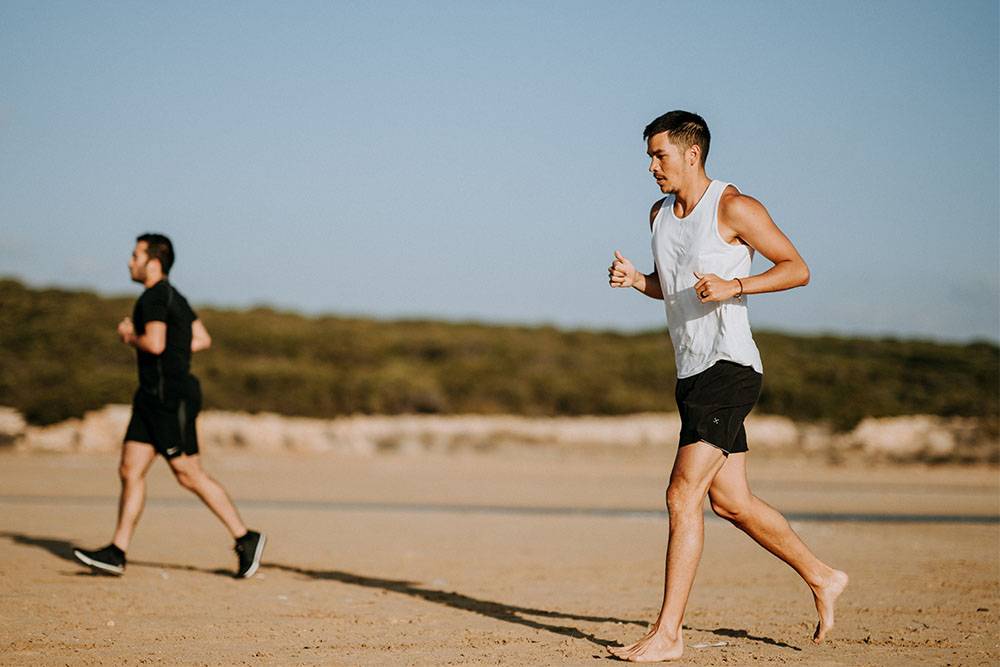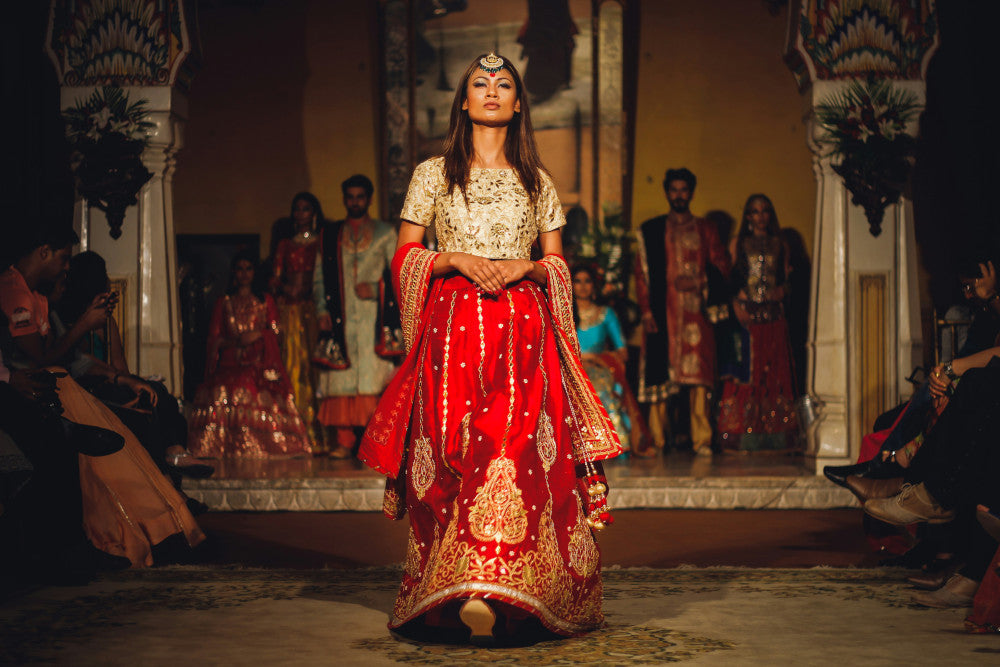
You've made a great decision if you want to start barefoot running. Switching to minimalist footwear or wearing no shoes when running is a practice for better well-being, strength, and flexibility.
Barefoot running is also a way to challenge yourself and try something new. It helps you feel the ground and stay in the present moment, more connected to your surroundings.
If you are new to barefoot and minimalist running, make sure to follow this ultimate step-by-step guide that will help you safely make the transition without hassle.
And feel free to check out our selection of affordable, vegan, minimalist, and barefoot shoes from some of the best sustainable footwear brands.
Panaprium is independent and reader supported. If you buy something through our link, we may earn a commission. If you can, please support us on a monthly basis. It takes less than a minute to set up, and you will be making a big impact every single month. Thank you!
1. Be barefoot around the house

Once you've decided to transition to minimalist or barefoot running, the first step is to acclimate your body to this new exercise and let it adapt to the changes slowly and progressively.
You can remove your shoes every time you come home and stay barefoot around the house, especially if you haven't been barefoot for too long in the past.
Your feet might be weak when you start barefoot running. Walking at home without any shoes will help you slowly strengthen the muscles and bones in your feet and lower legs.
It's also a great way to get a good feel for being barefoot for an extended amount of time. Running barefoot is all about being free and connected with the Earth, having fun, feeling light and at ease. Start at home before going outside.
2. Walk barefoot outside for a few minutes

To make sure to transition to minimalist or barefoot running without injury, don't start going too fast right away. The next step in your barefoot journey should be walking outside for few minutes at a time.
While going barefoot is a true joy and brings awareness to your body and the environment, it can also cause a good amount of stress on your body.
Start walking outside barefoot for a short time for a few days and see how you react to this new activity. It should be relaxing and, at the same time, a good massage for your soles.
Take the necessary time to get a better ground feel, sense the Earth under your feet, feel liberated and more connected to nature and your surroundings.
3. Go for a slow jog on hard surfaces

Remember to get started slowly. Many people make the mistake of transition to barefoot or minimalist running too fast and experience discouragement after pain or injury.
Your feet, ankles, and calf muscles might be weak from walking and running in conventional shoes all the time. So go for a slow jog in the beginning to avoid soreness and discomfort.
A hard surface such as asphalt or concrete is essential at first to learn good barefoot running form. For your first few times, you want to pay attention to how you run.
Running on a hard surface will teach you to avoid pounding your heels first and overextending your legs too much in front of your body. Instead, run softly, quietly, landing on your forefoot or midfoot.
4. Listen to your body carefully

Start slow jogging for only a few minutes without shoes and see how you feel the next day. It's crucial in the first few weeks to listen to your body carefully.
Don't put too much strain too soon on your lower legs by running too much at first. Go for a slow jog for a few minutes and make sure you feel great at all times.
Continue to jog slowly, softly, and quietly until you feel comfortable and strong enough to increase the amount of time you spend on your bare feet.
5. Take as much rest as you need

Don't hesitate to take days off if you feel any discomfort or soreness. It can take many days to many weeks, sometimes even months, for your body to adapt to this new running style.
Let your feet, legs, hips, and lower back get stronger and more resistant to this new stress as you run lightly, working on not pounding and landing your feet under your center of gravity.
Especially as a beginner to barefoot or minimalist running, you want to progress at your pace and avoid running for longer and faster too soon. Take days off your running schedule to recover and go stronger the next day.
6. Experience different types of terrain

Eventually, you can move on from running on hard surfaces to grass, sand, and dirt once you think you got good running form perfectly down. Try to experience many different types of terrain to give your feet and legs a good workout.
Get in tune with walking and running the natural way, working hard to reduce impact while spending time barefoot to give strength and balance to your body.
Different surfaces allow your feet to wake up, regain function and strength while feeling liberated and stimulated. While running barefoot, your brain will receive more sensory input from your feet.
Take time to let the many acupressure points on your feet connect to different parts of your body and be stimulated. Developing the nerves in your feet and the foot-brain connection will revitalize your entire body.
7. Slowly increase the time you spend barefoot

You can regret trying minimalist or barefoot running if you do too much too soon. Make sure to experience this new running slowly and take time to let your legs and feet get strong.
You can start increasing the time you spend running barefoot when you feel at ease and not challenged anymore. Make sure you feel comfortable first before running for longer distances.
If you feel like you acquired enough strength to run barefoot for an extended amount of time, you can go for an easy run of perhaps 10 to 30 minutes, depending on your level of experience as a runner.
8. Lower your expectations and be patient

For longer or faster runs, you might still want to wear shoes for now. It can take a few months up to several years to reach your previous level as a barefoot runner if you already have some running experience.
So lower your expectations and be patient. Let this phase take as long as it needs. Your feet and legs will get stronger over time if you stay mindful of your limits and keep slowly pushing your boundaries.
If you focus on having fun and avoid feeling ambitious too soon, you can make your barefoot running experience even more enjoyable. So take your time for each step of this guide and go slowly.
9. Do strength and flexibility exercises

You can accelerate your transition to barefoot running if you incorporate strength and flexibility exercises into your daily routine. Squats, deadlifts, lunges, planks, and crunches are great exercises to strengthen your core and lower body.
Keep stretching your calves, hamstrings, and thighs as you normally would before and after each run. Strength and flexibility exercises will ensure that your body adapts to your lifestyle changes and avoid injury.
10. Choose the best barefoot shoes for you

Now that you've done the most difficult steps for transitioning to barefoot running, you can reward yourself with awesome barefoot shoes. It's up to you how often you want to stay barefoot or wear shoes.
Minimalist and barefoot shoes become necessary if you are very serious about running and want to race and compete at a high-level. Some protection for your feet is also crucial for running on rocky trails, especially for marathon distances and up.
The best barefoot and minimalist shoes for running are cheap, eco-friendly, cruelty-free, and ethically made from natural, organic, or recycled materials.
They have a thin sole for minimal support and a good ground feel. Thin soles are ideal for lightweight, zero-drop footwear without raised heel bed or padding around the arch.
Whether you enjoy running, hiking, or wearing lightweight, flexible shoes, check out our selection of the best affordable, vegan, sustainable, minimalist, barefoot shoes.
Was this article helpful to you? Please tell us what you liked or didn't like in the comments below.
About the Author: Alex Assoune
What We're Up Against
Multinational corporations overproducing cheap products in the poorest countries.
Huge factories with sweatshop-like conditions underpaying workers.
Media conglomerates promoting unethical, unsustainable products.
Bad actors encouraging overconsumption through oblivious behavior.
- - - -
Thankfully, we've got our supporters, including you.
Panaprium is funded by readers like you who want to join us in our mission to make the world entirely sustainable.
If you can, please support us on a monthly basis. It takes less than a minute to set up, and you will be making a big impact every single month. Thank you.
































0 comments